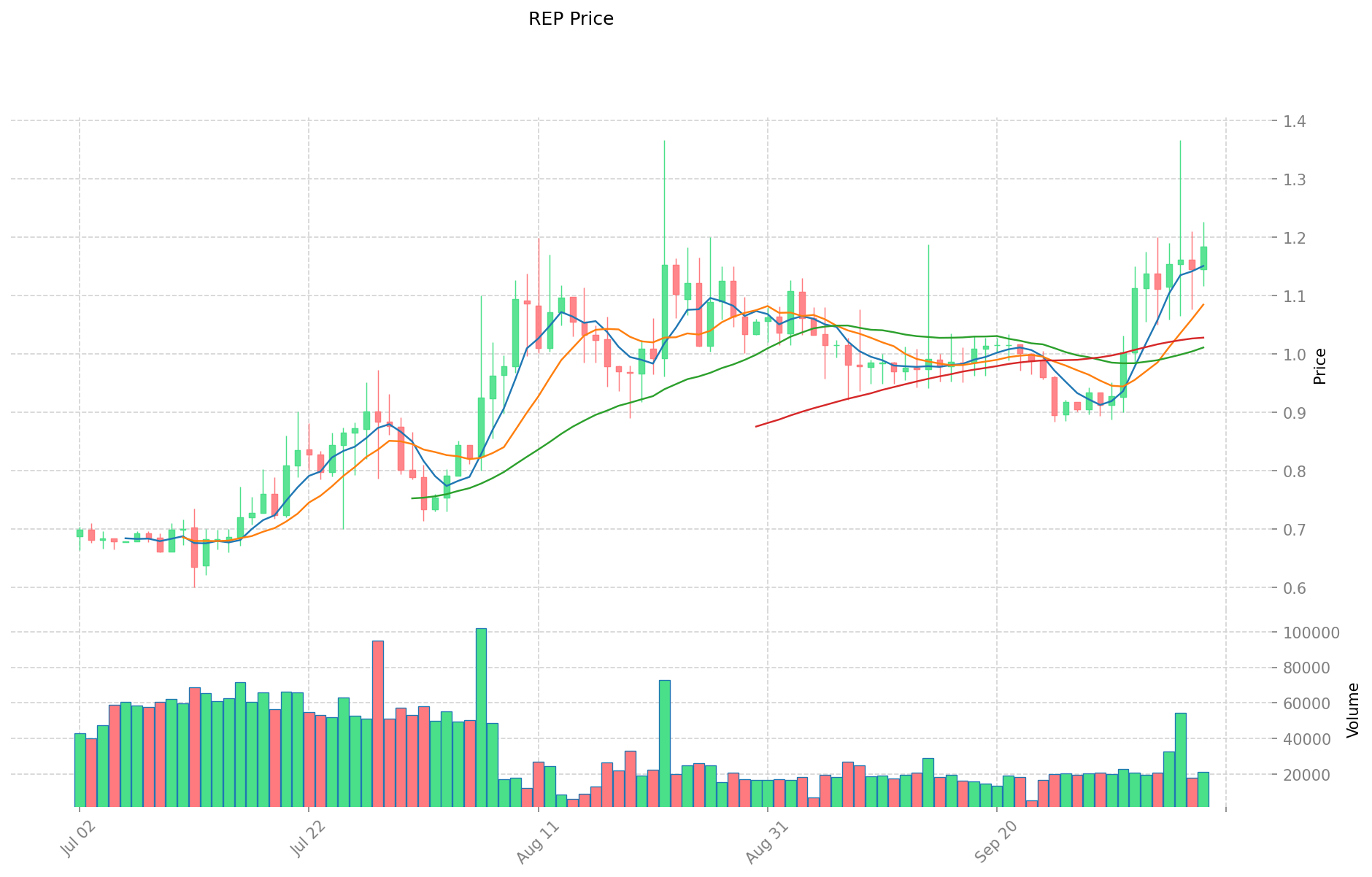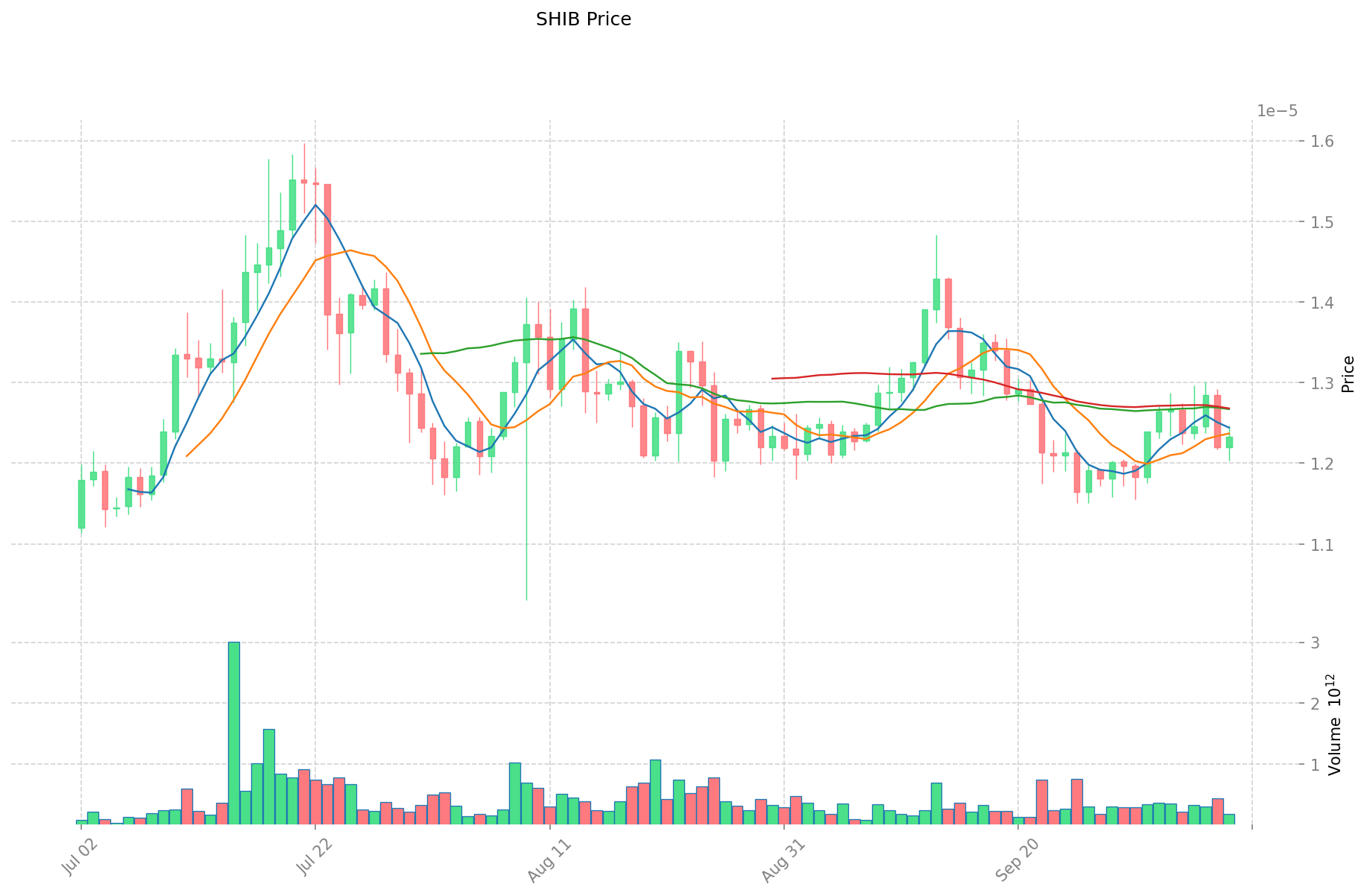REP vs SHIB: Analyzing the Potential and Performance of Two Popular Cryptocurrencies in Today's Volatile Market
Introduction: REP vs SHIB Investment Comparison
In the cryptocurrency market, the comparison between Augur (REP) vs Shiba Inu (SHIB) has always been a topic that investors cannot avoid. The two not only show significant differences in market cap ranking, application scenarios, and price performance, but also represent different positioning in crypto assets.
Augur (REP): Since its launch in 2015, it has gained market recognition for its decentralized prediction market platform.
Shiba Inu (SHIB): Launched in 2020, it has been hailed as a "Dogecoin killer" and is one of the most popular meme tokens in the global cryptocurrency market.
This article will provide a comprehensive analysis of the investment value comparison between REP and SHIB, focusing on historical price trends, supply mechanisms, institutional adoption, technological ecosystems, and future predictions, attempting to answer the question that investors are most concerned about:
"Which is the better buy right now?"
I. Price History Comparison and Current Market Status
REP (Augur) and SHIB (Shiba Inu) Historical Price Trends
- 2016: REP reached its all-time high of $341.85 due to its initial launch and market enthusiasm.
- 2021: SHIB experienced a significant price surge, reaching its all-time high of $0.00008616 due to meme coin popularity and community growth.
- Comparative analysis: During the 2022 bear market, REP dropped from its peak to a low of $0.2075, while SHIB showed more resilience, maintaining higher trading volumes.
Current Market Situation (2025-10-09)
- REP current price: $1.1839
- SHIB current price: $0.000012334
- 24-hour trading volume: REP $24,194.60 vs SHIB $2,239,932.39
- Market Sentiment Index (Fear & Greed Index): 60 (Greed)
Click to view real-time prices:
- Check REP current price Market Price
- Check SHIB current price Market Price


Core Factors Affecting Investment Value of REP vs SHIB
Supply Mechanism Comparison (Tokenomics)
- REP: Utility token with fixed or controlled supply mechanism tied to its governance function
- SHIB: Large initial supply with potential for token burning mechanisms
- 📌 Historical Pattern: Supply mechanisms drive price cycles differently - REP's controlled supply aims for stability while SHIB's large supply relies on scarcity creation through burns.
Institutional Adoption and Market Application
- Institutional Holdings: Limited institutional presence in both, with REP potentially having more institutional interest due to its utility focus
- Enterprise Adoption: REP has more practical applications in prediction markets while SHIB functions primarily as a speculative asset
- Regulatory Attitudes: Different regulatory approaches across jurisdictions, with utility tokens like REP generally facing less scrutiny than meme coins like SHIB
Technical Development and Ecosystem Building
- REP Technical Upgrades: Development focused on platform functionality and governance mechanisms
- SHIB Technical Development: Focus on expanding ecosystem through new tokens and platforms
- Ecosystem Comparison: REP integrated within a specific prediction market ecosystem while SHIB is developing broader DeFi and NFT applications
Macroeconomic Factors and Market Cycles
- Performance During Inflation: Neither has proven strong inflation-hedging properties
- Macroeconomic Monetary Policy: Both affected by interest rates and USD strength, with speculative assets like SHIB showing higher sensitivity
- Geopolitical Factors: Cross-border transaction demand affects both, with REP potentially benefiting from increased focus on decentralized prediction markets
III. 2025-2030 Price Prediction: REP vs SHIB
Short-term Prediction (2025)
- REP: Conservative $1.14 - $1.18 | Optimistic $1.18 - $1.28
- SHIB: Conservative $0.0000099 - $0.000012 | Optimistic $0.000012 - $0.000018
Mid-term Prediction (2027)
- REP may enter a bullish market, with prices expected in the range of $1.35 - $2.08
- SHIB may enter a growth phase, with prices expected in the range of $0.000011 - $0.000024
- Key drivers: Institutional capital inflow, ETF, ecosystem development
Long-term Prediction (2030)
- REP: Base scenario $1.26 - $2.13 | Optimistic scenario $2.13 - $2.54
- SHIB: Base scenario $0.000014 - $0.000024 | Optimistic scenario $0.000024 - $0.000035
Disclaimer: This analysis is based on historical data and projections. Cryptocurrency markets are highly volatile and unpredictable. This information should not be considered as financial advice. Always conduct your own research before making investment decisions.
REP:
| 年份 | 预测最高价 | 预测平均价格 | 预测最低价 | 涨跌幅 |
|---|---|---|---|---|
| 2025 | 1.27926 | 1.1845 | 1.13712 | 0 |
| 2026 | 1.7615884 | 1.23188 | 0.9485476 | 4 |
| 2027 | 2.080460538 | 1.4967342 | 1.34706078 | 26 |
| 2028 | 1.94957113221 | 1.788597369 | 1.48453581627 | 51 |
| 2029 | 2.3924278407744 | 1.869084250605 | 1.62610329802635 | 57 |
| 2030 | 2.535599694370743 | 2.1307560456897 | 1.257146066956923 | 79 |
SHIB:
| 年份 | 预测最高价 | 预测平均价格 | 预测最低价 | 涨跌幅 |
|---|---|---|---|---|
| 2025 | 0.00001758614 | 0.000012298 | 0.00000996138 | 0 |
| 2026 | 0.0000195741117 | 0.00001494207 | 0.0000083675592 | 21 |
| 2027 | 0.000023988746281 | 0.00001725809085 | 0.000010700016327 | 40 |
| 2028 | 0.000021654589494 | 0.000020623418565 | 0.000010517943468 | 67 |
| 2029 | 0.000026635145077 | 0.000021139004029 | 0.000015431472941 | 71 |
| 2030 | 0.000035352870339 | 0.000023887074553 | 0.000013615632495 | 93 |
IV. Investment Strategy Comparison: REP vs SHIB
Long-term vs Short-term Investment Strategies
- REP: Suitable for investors focused on utility and prediction market potential
- SHIB: Suitable for investors seeking high-risk, high-reward opportunities in meme coins
Risk Management and Asset Allocation
- Conservative investors: REP: 70% vs SHIB: 30%
- Aggressive investors: REP: 40% vs SHIB: 60%
- Hedging tools: Stablecoin allocation, options, cross-currency portfolios
V. Potential Risk Comparison
Market Risks
- REP: Limited liquidity, potential for market manipulation
- SHIB: High volatility, susceptibility to market sentiment
Technical Risks
- REP: Scalability, network stability
- SHIB: Smart contract vulnerabilities, ecosystem development challenges
Regulatory Risks
- Global regulatory policies may impact both differently, with meme coins like SHIB potentially facing more scrutiny
VI. Conclusion: Which Is the Better Buy?
📌 Investment Value Summary:
- REP advantages: Utility-focused, established prediction market platform
- SHIB advantages: Strong community support, potential for rapid price movement
✅ Investment Advice:
- Novice investors: Consider a small allocation to SHIB for exposure to meme coin market
- Experienced investors: Balanced approach with higher allocation to REP for its utility
- Institutional investors: Focus on REP for its potential in decentralized prediction markets
⚠️ Risk Warning: Cryptocurrency markets are highly volatile. This article does not constitute investment advice. None
VII. FAQ
Q1: What are the main differences between REP and SHIB? A: REP is a utility token for the Augur prediction market platform, while SHIB is a meme token. REP has a controlled supply mechanism, while SHIB has a large initial supply with potential burning mechanisms. REP focuses on practical applications in prediction markets, while SHIB functions primarily as a speculative asset.
Q2: Which token has performed better historically? A: SHIB has shown more significant price surges, reaching its all-time high in 2021 due to meme coin popularity. REP reached its all-time high earlier in 2016 but has since experienced more substantial price drops. During the 2022 bear market, SHIB showed more resilience, maintaining higher trading volumes.
Q3: How do their current market situations compare? A: As of 2025-10-09, REP's price is $1.1839 with a 24-hour trading volume of $24,194.60. SHIB's price is $0.000012334 with a significantly higher 24-hour trading volume of $2,239,932.39. The market sentiment index is currently at 60 (Greed).
Q4: What are the key factors affecting the investment value of REP and SHIB? A: Key factors include supply mechanisms, institutional adoption, technical development and ecosystem building, and macroeconomic factors. REP's value is more tied to its utility in prediction markets, while SHIB's value is heavily influenced by community support and market sentiment.
Q5: What are the long-term price predictions for REP and SHIB? A: By 2030, REP is predicted to reach $1.26 - $2.54 in various scenarios, while SHIB is expected to reach $0.000014 - $0.000035. These predictions are based on potential market growth, ecosystem development, and increased adoption.
Q6: How should investors approach REP and SHIB in terms of risk management? A: Conservative investors might consider allocating 70% to REP and 30% to SHIB, while aggressive investors might allocate 40% to REP and 60% to SHIB. It's important to use hedging tools such as stablecoin allocation, options, and cross-currency portfolios to manage risk.
Q7: What are the potential risks associated with investing in REP and SHIB? A: Both tokens face market risks such as volatility and liquidity issues. REP faces technical risks related to scalability and network stability, while SHIB may be vulnerable to smart contract issues. Regulatory risks are also a concern, with meme coins like SHIB potentially facing more scrutiny.
Q8: Which token is considered a better buy for different types of investors? A: For novice investors, a small allocation to SHIB might provide exposure to the meme coin market. Experienced investors might consider a balanced approach with a higher allocation to REP for its utility. Institutional investors may focus on REP for its potential in decentralized prediction markets. However, all investors should conduct their own research and consider their risk tolerance before investing.
Share
Content